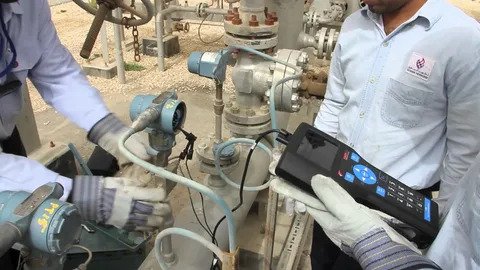The Impact Of Temperature Transmitter Calibration On Energy Efficiency
When it comes to optimizing energy efficiency in industrial processes, every small detail matters. One often overlooked aspect is Temperature Transmitter Calibration. Temperature measurement is crucial in various industries, including manufacturing, oil and gas, and HVAC systems.
Accurate temperature readings not only ensure product quality but also play a significant role in energy consumption.
In this blog post, we will explore the importance of temperature transmitter calibration and its impact on energy efficiency.
What is Temperature Transmitter Calibration?
Before diving into the details, let's briefly understand what temperature transmitter calibration entails. A temperature transmitter is a device that converts the analog signal from a temperature sensor into a digital signal for accurate measurement and transmission.
Calibration, in this context, refers to the process of comparing the temperature readings of a transmitter with a known reference to determine and adjust any deviations or errors.
Ensuring Accurate Measurements
Temperature Transmitter Calibration is crucial for maintaining accurate temperature measurements. Over time, temperature transmitters can drift and become less precise, resulting in incorrect readings.
This drift can be due to factors such as aging components, environmental conditions, or electrical interference. By calibrating temperature transmitters at regular intervals, you can ensure that the readings remain accurate and reliable.
Energy Efficiency Benefits
Calibrating temperature transmitters goes beyond accuracy; it directly impacts energy efficiency in industrial processes. Here's how:
Optimal Setpoint Control
Temperature transmitters play a vital role in controlling temperature setpoints in various industrial processes. When the transmitter is accurately calibrated, it ensures that the setpoint temperature is maintained correctly. As a result, the equipment or system operates under optimal conditions, reducing energy waste and improving overall energy efficiency.
Preventing Energy Overconsumption
Inaccurate temperature readings can lead to energy overconsumption. For instance, if a temperature transmitter is reading lower than the actual temperature, the system might work harder than necessary to reach the desired setpoint. This extra energy consumption can be avoided by calibrating the transmitter regularly, ensuring it provides accurate temperature readings and preventing unnecessary energy waste.
Detecting System Anomalies
Temperature transmitters can serve as early indicators of system anomalies or malfunctions. By calibrating temperature transmitters, you can spot any deviations in readings that may indicate equipment issues or inefficiencies. Addressing these problems promptly not only improves energy efficiency but also prevents costly breakdowns and repairs.
Enhancing Process Optimisation
Calibrating temperature transmitters not only ensures accurate readings but also allows for process optimization. By monitoring temperature trends over time, you can identify areas for improvement, adjust operating parameters, and fine-tune energy consumption.
This continuous improvement approach can lead to substantial energy savings and increased efficiency in the long run.
Conclusion
Temperature transmitter calibration is a critical aspect of energy efficiency in industrial processes. By ensuring accurate temperature measurements, you can achieve optimal setpoint control, prevent energy overconsumption, detect system anomalies, and enhance process optimization.
Regular calibration of temperature transmitters is a simple yet effective step toward maximizing energy efficiency and reducing operational costs.
Remember, small adjustments can make a significant difference when it comes to saving energy and promoting sustainability in your industry.


Comments
Post a Comment